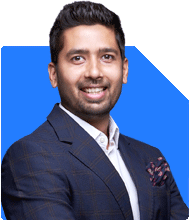Ramalingam Kalirajan |10899 Answers |Ask -Follow
Mutual Funds, Financial Planning Expert - Answered on May 06, 2024
He has an MBA in finance from the University of Madras and is a certified financial planner.
He is the director and chief financial planner at Holistic Investment, a Chennai-based firm that offers financial planning and wealth management advice.... more

Hello Experts, Greetings Im 33yr old and was earning just to make ends meet until now.Now I have a job where I can save 1.5 lakhs per month. I have short term goal to buy a car worth 10 lakhs in next 1 year or so. . suggest an investment strategy so that I can plan accordingly to achieve this goal. Also with about 50,000 I can invest in equity and debt with 60%-40% ratio for a long time. please suggest SIPs for the same. Thank you
Short-Term Goal (Car Purchase):
Since your goal is to buy a car within the next year, it's crucial to focus on low-risk, liquid investment options to ensure the safety of your capital.
Consider investing your savings in a combination of fixed deposits (FDs), liquid mutual funds, or short-term debt funds. These options provide relatively stable returns and allow for easy access to funds when needed.
Aim to allocate your savings in such a way that you can accumulate 10 lakhs within the specified timeframe. Calculate the required monthly contribution based on your investment choice and the expected rate of return.
Long-Term Investment (Equity and Debt):
With a monthly surplus of 50,000 for long-term investments, you have the opportunity to build a well-diversified portfolio that balances growth potential and risk.
Considering your risk tolerance and the long investment horizon, a 60%-40% allocation to equity and debt, respectively, seems reasonable.
For equity investments, consider investing in a mix of large-cap, mid-cap, and multi-cap mutual funds through SIPs. These funds offer exposure to different segments of the market and can help diversify your portfolio.
For debt investments, opt for high-quality debt funds or fixed income options like PPF or debt-oriented mutual funds. These instruments provide stability and regular income while preserving capital.
Regularly review your portfolio's performance and make adjustments as needed to stay aligned with your financial goals and risk tolerance.
For your short-term goal, prioritize capital preservation and liquidity, while for your long-term investment portfolio, focus on creating a balanced mix of equity and debt instruments to achieve your financial objectives.
Best of luck with your investments and car purchase journey!
You may like to see similar questions and answers below
Kirtan A Shah | Answer |Ask -Follow
MF Expert, Financial Planner - Answered on Sep 22, 2023
Ramalingam Kalirajan |10899 Answers |Ask -Follow
Mutual Funds, Financial Planning Expert - Answered on Apr 13, 2024
Ramalingam Kalirajan |10899 Answers |Ask -Follow
Mutual Funds, Financial Planning Expert - Answered on Jul 19, 2025
Naveenn Kummar |235 Answers |Ask -Follow
Financial Planner, MF, Insurance Expert - Answered on Sep 11, 2025
Ramalingam Kalirajan |10899 Answers |Ask -Follow
Mutual Funds, Financial Planning Expert - Answered on Sep 11, 2025
Ramalingam Kalirajan |10899 Answers |Ask -Follow
Mutual Funds, Financial Planning Expert - Answered on Dec 17, 2025
Ramalingam Kalirajan |10899 Answers |Ask -Follow
Mutual Funds, Financial Planning Expert - Answered on Dec 17, 2025
Ramalingam Kalirajan |10899 Answers |Ask -Follow
Mutual Funds, Financial Planning Expert - Answered on Dec 17, 2025
Ramalingam Kalirajan |10899 Answers |Ask -Follow
Mutual Funds, Financial Planning Expert - Answered on Dec 17, 2025
Ramalingam Kalirajan |10899 Answers |Ask -Follow
Mutual Funds, Financial Planning Expert - Answered on Dec 17, 2025
Mayank Chandel |2576 Answers |Ask -Follow
IIT-JEE, NEET-UG, SAT, CLAT, CA, CS Exam Expert - Answered on Dec 17, 2025
Radheshyam Zanwar |6747 Answers |Ask -Follow
MHT-CET, IIT-JEE, NEET-UG Expert - Answered on Dec 16, 2025
Shalini Singh |181 Answers |Ask -Follow
Dating Coach - Answered on Dec 16, 2025
Patrick Dsouza |1429 Answers |Ask -Follow
CAT, XAT, CMAT, CET Expert - Answered on Dec 16, 2025
Nayagam P P |10858 Answers |Ask -Follow
Career Counsellor - Answered on Dec 16, 2025




























